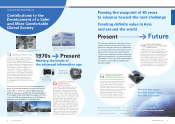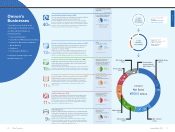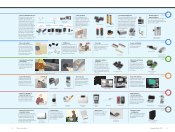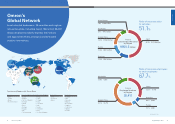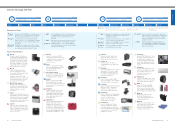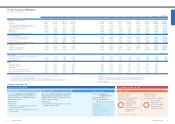Omron 2013 Annual Report Download - page 16
Download and view the complete annual report
Please find page 16 of the 2013 Omron annual report below. You can navigate through the pages in the report by either clicking on the pages listed below, or by using the keyword search tool below to find specific information within the annual report.
28 Omron Corporation Integrated Report 2013 29
Where We're Headed
Factory Automation (FA) Growing
Together with People’s Lives
Evolution of Automation
at Production Sites
By supporting factories, Omron has continued to
contribute to the daily development of a more ful-
fi lling and convenient society.
As the focus of production activities changed
from people to machines, we have continued to
advance technological innovation in the fi eld of FA.
In the mid-20th century, automation was advanc-
ing in strides in developing nations. Omron de-
clared 1955 as “Year One of Automation.” It was
one of the fi rst companies in Japan to begin devel-
oping and promoting the spread of relays, timers,
and switches, all items that are indispensable in
automating the movement of machines. Through
those efforts, Omron helped drive the shift from
people to machines as agents of production, there-
by reducing human error brought about by extend-
ed work periods and subsequently improving
production effi ciency and making workplaces safer
for people.
At the same time, we developed the base for
mono zukuri (manufacturing) technology, which
encompasses all aspects of product creation, includ-
ing production and other processes, management
systems, and quality management techniques.
Omron created the world’s fi rst contactless switch,
which contributed to the development of machines
that could conduct mass production without wear
or malfunction. The realization of mass production
resulted in an ample supply of products being put
on the market, helping consumers acquire the
items they need with greater ease.
In 1972, Omron successfully developed its Sys-
mac programmable controller and continued to lead
the advance of automation by proposing new value
using its revolutionary technologies, such as its
ultra-high-speed fuzzy logic controller and visual
sensors that can play the part of human eyes, both
world fi rsts. The advance of automation drove
growth in the economy, which in turn made peo-
ple’s lives more comfortable and convenient. We
believe that such automation advancements made
substantial contributions to Japan’s period of strong
economic growth.
Development of Safer Workplaces
The advance of automation led to a decline in the
need for humans to conduct dangerous tasks.
However, as machines became more powerful,
they eventually came to pose risks to people.
Omron identifi ed that guaranteeing the safety of
machines toward humans is an important theme
and developed safety sensors, which automatically
halt dangerous machines should a worker approach
them, and safety door switches that prevent work-
ers from approaching dangerous machines in the
fi rst place. At the same time, Omron actively pro-
moted the standardization of automation safety
regulations and transmitted information to educate
the market with regard to safety, working to create
safer production sites around the world.
Preservation of Natural Resources
When considering natural resources, it is clear
that the energy used by machinery and the impure
substances they emit represent serious environ-
mental issues.
Omron has been proactive in making the automa-
tion equipment it produces lead-free and therefore
more eco-friendly. In addition, we have developed
more precise control technologies to prevent mate-
rials from going to waste due to the production of
defective products.
To lower energy consumption, which is particu-
larly high in the manufacturing industry, we have
developed an array of sensing, display, and control
equipment that contributes to energy savings. Fur-
ther, we have created means of applying “Sensing
and Control” technologies to energy to reduce
consumption, and these technologies have been
introduced into Omron’s own production sites.
• Particle Sensors
Measure dust in
clean rooms and
equipment
• Temperature and
Humidity Sensors
• Differential Pressure Sensors
Measure pressure differences
between clean rooms and
the outside environment
For Environmental Preservation
Core Theme
1Industrial Automation Business (IAB) and Emerging Countries
History of Automation
and Asian Market of Today
• Electricity monitors
Measure electricity
usage
Future Potential of Automation
FA around the World
Automation has undergone a startling evolution in
Japan over the years. Today, the contributions of
automation’s evolution are everywhere and automa-
tion technologies have spread throughout the lives
of countless people.
• Safety Light Curtains
Halt machines when
a person approaches
For Safer Workplaces
• Safety Door Switches
Halt machines when
doors are opened


